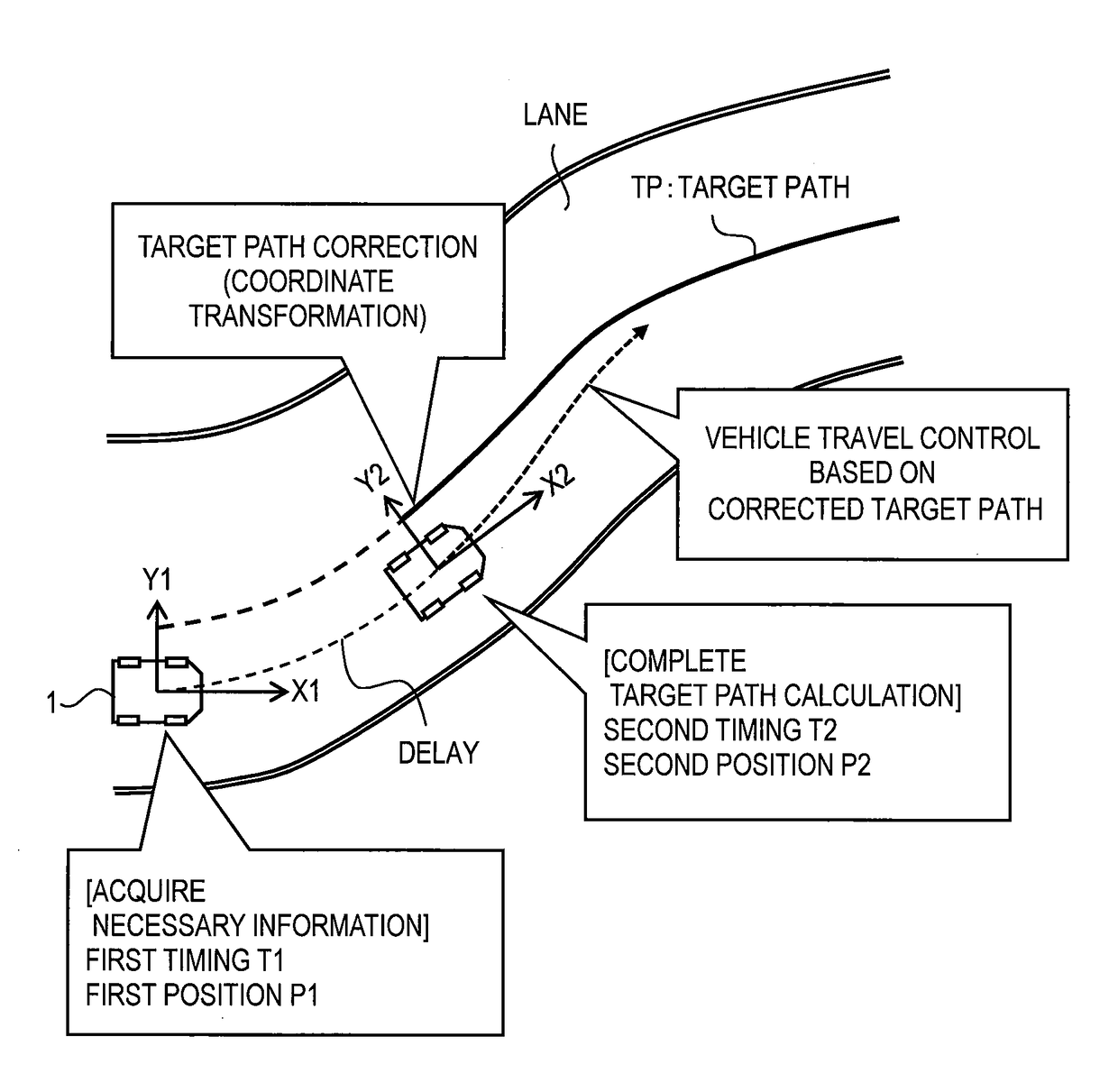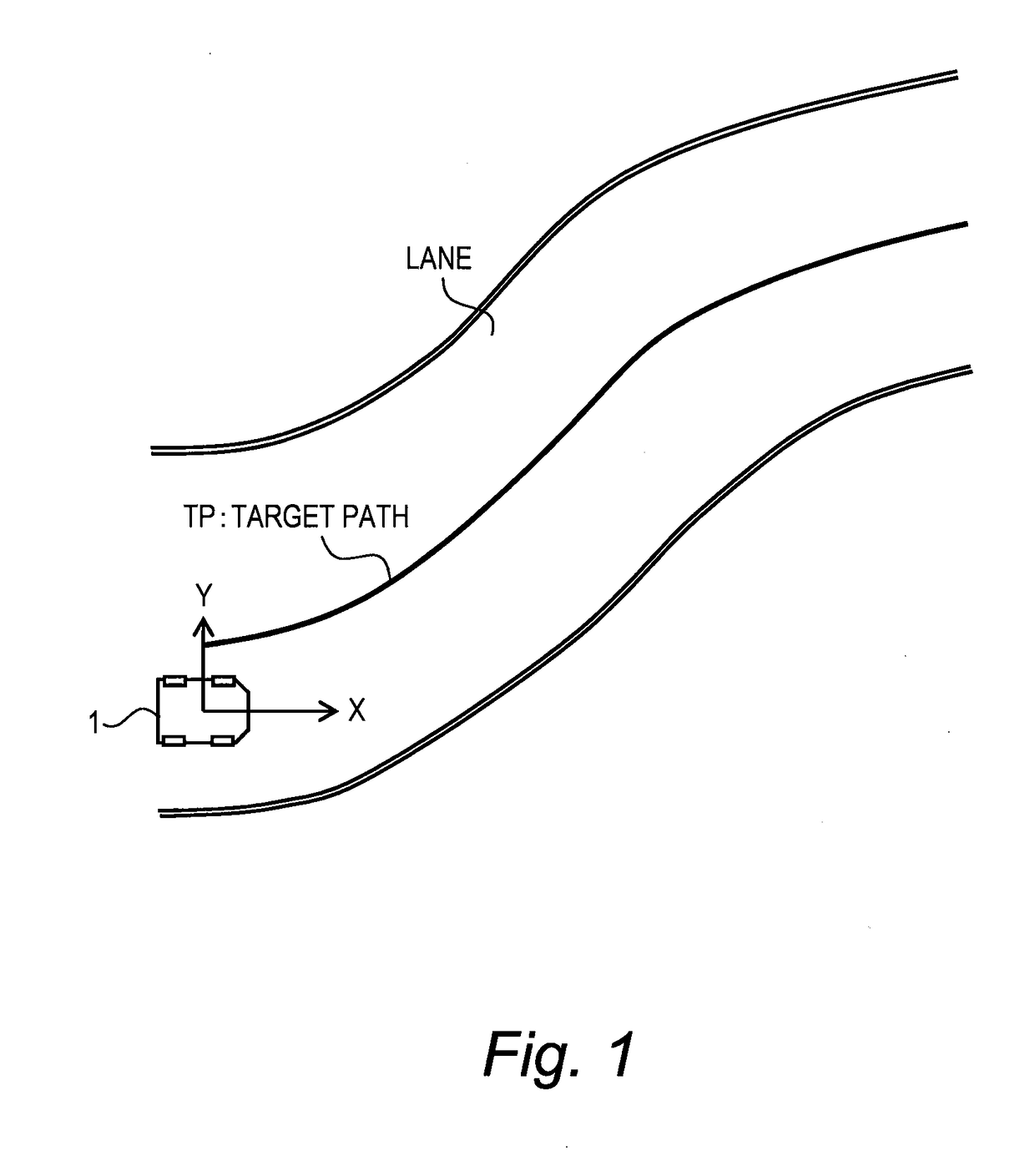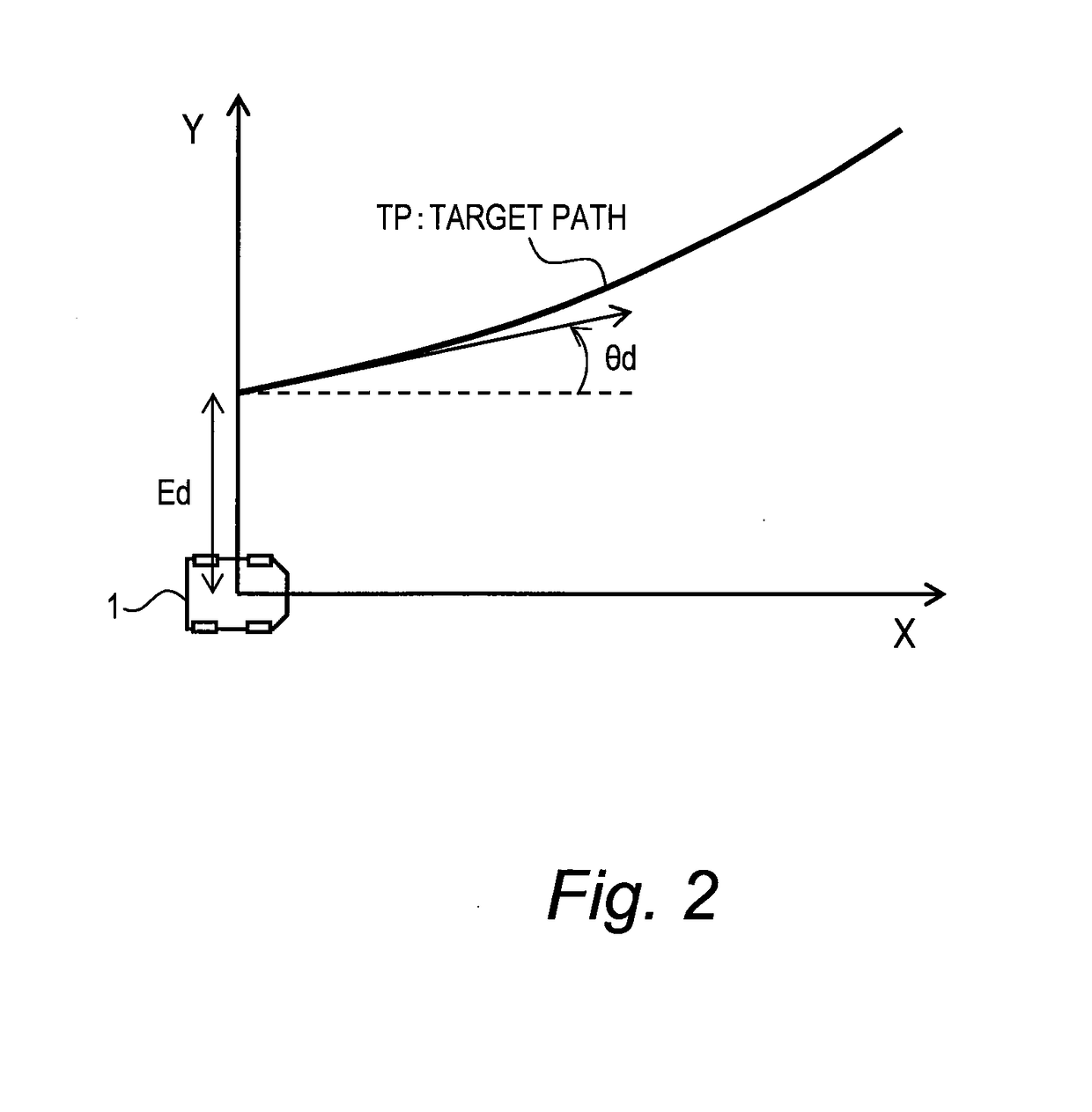Autonomous driving system
- Summary
- Abstract
- Description
- Claims
- Application Information
AI Technical Summary
Benefits of technology
Problems solved by technology
Method used
Image
Examples
first embodiment
1. First Embodiment
1-1. Outline of Path-Following Control by Autonomous Driving System
[0056]FIG. 1 is a conceptual diagram for explaining path-following control by an autonomous driving system according to the present embodiment. The autonomous driving system is mounted on a vehicle 1 and controls autonomous driving of the vehicle 1. The path-following control is a kind of the autonomous driving control. More specifically, in the path-following control, the autonomous driving system periodically calculates a target path TP for the vehicle 1, and controls travel of the vehicle 1 so as to follow the latest target path TP.
[0057]Here, let us define a vehicle coordinate system (X, Y). The vehicle coordinate system is a relative coordinate system fixed to the vehicle 1 and varies with motion of the vehicle 1. That is, the vehicle coordinate system is defined by a position and an orientation of the vehicle 1. In the example shown in FIG. 1, the X-direction is a front direction of the vehic...
modification example
1-5. Modification Example
[0105]The delay time from the first timing T1 to the second timing T2 is not necessarily limited to the target path calculation time. For example, the delay time from the first timing T1 to the second timing T2 may be set in consideration of the information communication time, the actuator response time, and the like.
[0106]When the delay time from the first timing T1 to the second timing T2 is the target path calculation time, the delay time may be actually measured, instead of giving a predetermined value as the delay time. More specifically, at the above-described Step S30, the target path calculation unit 123 measures a processing time of the target path calculation processing and outputs the measurement result to the target path correction unit 124. The target path correction unit 124 can recognize the second timing T2 and the second coordinate system based on the measurement result.
second embodiment
2. Second Embodiment
2-1. Outline
[0107]The necessary information 90 necessary for calculating the target path TP is periodically acquired and updated. Every time the necessary information 90 is updated, the target path TP is determined and updated as well. In the following description, a suffix “k−1” represents the previous and a suffix “k” represent the latest.
[0108]FIGS. 12 and 13 show an example of updating of the necessary information 90 and the target path TP. At the previous first timing T1(k−1), the previous necessary information 90 is acquired. At the previous second timing T2(k−1), the previous target path TP(k−1) is obtained. At the first timing T1(k), the new necessary information 90 is acquired. At the second timing T2(k), the new target path TP(k) is obtained. That is, the target path TP is updated.
[0109]During a period from the first timing T1(k) to the second timing T2(k), the new target path TP(k) is under calculation and not yet determined. Therefore, during the peri...
PUM
 Login to View More
Login to View More Abstract
Description
Claims
Application Information
 Login to View More
Login to View More - R&D
- Intellectual Property
- Life Sciences
- Materials
- Tech Scout
- Unparalleled Data Quality
- Higher Quality Content
- 60% Fewer Hallucinations
Browse by: Latest US Patents, China's latest patents, Technical Efficacy Thesaurus, Application Domain, Technology Topic, Popular Technical Reports.
© 2025 PatSnap. All rights reserved.Legal|Privacy policy|Modern Slavery Act Transparency Statement|Sitemap|About US| Contact US: help@patsnap.com



